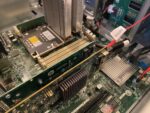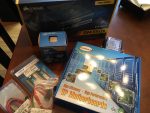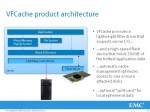I have an HPE ML110 Gen10 server. It’s an excellent piece of hardware but does not “like” the LSI SAS card I want to use for FreeNAS. Every time it boots, I get a “red screen of death” because the LSI card is trying to load its ROM. Luckily I stumbled on a fix, and thought I would share it here.
LSI
My FreeNAS Build: Supermicro X10SL7, Intel Haswell Xeon, ECC RAM
Today I’m going to dive into the hardware I selected for FreeNAS, starting with the motherboard, CPU, and memory. FreeNAS runs on any PC hardware, but building a reliable and scalable storage solution means picking higher-end components. I selected a Supermicro X10SL7 server-class motherboard with 14 (!) SAS/SATA ports paired with an Intel Xeon E3-1231v3 (Haswell) CPU and ECC memory from Crucial.
Can Fusion-io Survive Commoditization?
No small storage company has had more press coverage and “buzz” than “ioMemory” maker, Fusion-io. I have long marveled at the company’s ability to attract attention, but this has rub some analysts wrong. How, they argue, as component vendors enter their space, can a premium company with proprietary products compete over the long term?
Solid State Storage Symposium – San Jose, CA
It seems like everything in storage is in flux right now, with virtualization, commoditization, convergence, and solid state disrupting everything. That’s why we at Gestalt IT have decided to host a Symposium on the topic of Solid State Storage: We’ll be bringing in experts from a number of top companies to talk tech, and are inviting anyone interested to attend in person or watch online!
EMC VFCache (aka “Project Lightning”) Is One Small Step, But an Important One
EMC VFCache (née Project Lightning) is a fairly simple offering: A server-based PCIe flash card that acts as a read cache with no integration with storage arrays or hypervisors. But EMC’s entrance into the host-based flash storage market is a powerful demonstration of the wave of disruption caused by flash-based storage and high-performance computing.




